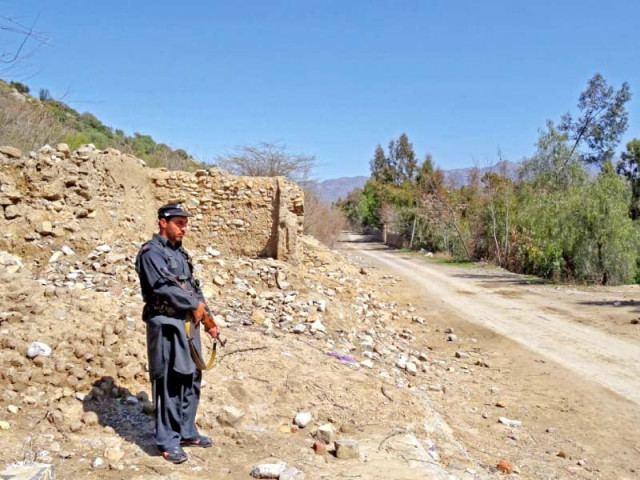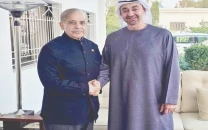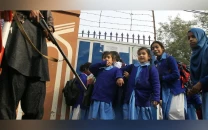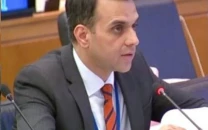In search for peace: The long road from Kurram to Australia
Tribal elders and residents estimate that more than 2,800 men aged between 25 and 35 years have left for Australia

A security official stands guard near the debris of destroyed houses in Lower Kurram. PHOTO: IFTIKHAR FIRDOUS/EXPRESS
Debris of villages and two dozen checkpoints are distractions on the road that leads to Parachinar. These reminders of the conflict within are mitigated by the majesty of a white peak—Koh-e-Sufaid—and fields greener than the imagination.
The recovery in this area has been slow ever since the Thall-Parachinar-Sadda highway reopened after a sectarian conflict a few years ago. There is cautious movement of both Shia and Sunni tribes in each other’s territory. The young people have started looking for newer diasporas in search of a better future, which is not always possible through legal means.
More than 117 deaths have been recorded from Kurram Agency in at least two shipwrecks around the coast of Australia in the years following the conflict. Residents say the unrecorded deaths run into the hundreds but no trusted statistics are available.
Tribal elders and residents estimate that more than 2,800 men aged between 25 and 35 years have left for Australia. Seven members of Imtiaz Hussain’s family (not his real name) left after 15 of them were shot dead in a single day. “The situation around here is volatile,” he explains. “Everybody wants a better life.” It is difficult to understand why they are citing economics as motivation for fleeing given that violence seems to have informed their decision to leave. Of course, it is undeniable that jobs and business are shaky even though there is relative calm these days. And even though they hear of hundreds of their young men stranded in camps for illegally entering a foreign country, the desperation persists. “If anyone else gets a chance he will still try to get out.”
This year Pakistan has ranked sixth on the asylum seeking index of the United Nations, with 26,300 applications, a fourth consecutive annual increase. 847 applications are just for Australia and New Zealand.
Paying to leave Parachinar is complicated; and thus many people are in line, waiting to scrounge together enough. The humble tractor is now being seen in an altogether different light now—less as an implement to till the field and more as a cash cow to cross the waters.
A tractor costs roughly Rs0.7 million. People who anticipate they will need cash invest in the machine by paying yearly installments, explains Israr. And even though the tractor eventually sells for the much lesser price of Rs500,000, it has become a ticket to Australia.
But not just the young people of Parachinar are leaving. There is another category locally referred to as the “02” who make up the major chunk of those who are looking to migrate. The origin of word “02” comes from the dialing code of Kurram Agency, explains Baram Hussain. “These [02s] include migrant workers from the tribal agency who were asked to leave the Gulf Countries.” If you ask him why they returned, his curt reply is simply that they “were from Kurram” as if geography and belonging explain it all. But his elliptic reply has resonances with larger sectarian conflict within the Arab world.
Those who have managed to settle abroad are sending much-needed money home, Imtiaz says, pointing to a large newly painted four-story house. “They are an inspiration for what lies beyond the conflict.”
Under the shadow of a Chinar, schoolchildren gather to play during recess with heavily armed guards protecting the premises.
Published in The Express Tribune, March 31st, 2015.











1726134115-0/BeFunk_-(41)1726134115-0-208x130.webp)






COMMENTS
Comments are moderated and generally will be posted if they are on-topic and not abusive.
For more information, please see our Comments FAQ